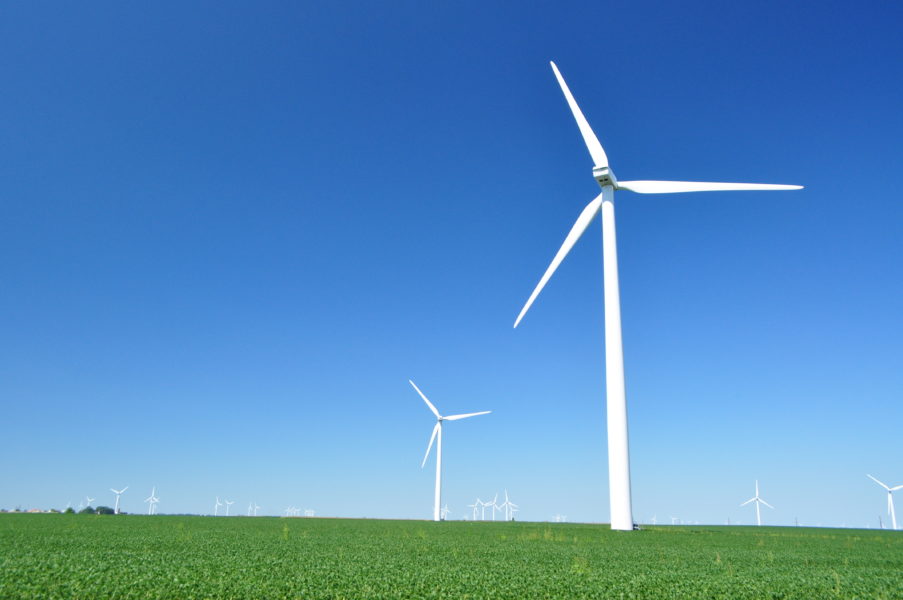It’s been a fast-moving and momentous year in 2021, and the clean energy scene in the Midwest is no exception. Here are some highlights on clean energy wins that have helped move us forward in three key states—Illinois, Michigan, and Minnesota—and at one of our regional grid operators, the Midcontinent Independent System Operator (MISO).
Illinois
In September, Illinois enacted the landmark Climate and Equitable Jobs Act (CEJA). My colleague Jessica Collingsworth described the legislative victory as “a significant win for our climate, as well as the health and economies of communities throughout the state.”
CEJA made Illinois the first Midwest state to pass legislation to phase out fossil fuels in the power sector and require electricity providers to source at least 50 percent of their power from renewable energy. The law puts Illinois on a path to achieve a 100-percent carbon-free power sector by 2045 and prioritizes environmental justice communities for pollution reductions. It provides funding for job training and communities at the frontlines of the transition from fossil fuels. In a win for consumers, CEJA changes the way utilities calculate electricity rates and increases utility accountability. CEJA also addresses the transportation sector by committing as much as $80 million per year over the next 10 years to electric transportation with nearly half of these investments going to environmental justice and low-income communities.
State agencies, utilities, and stakeholders are now hard at work to implement CEJA to, among other things, expand renewable energy, upgrade energy efficiency programs, promote inclusive financing programs, create equitable jobs, ensure just transitions for communities, and make utilities more accountable and transparent.

Michigan
In Michigan, the state’s Council on Climate Solutions got to work developing an action plan to meet Gov. Gretchen Whitmer’s ambitious goal to achieve carbon neutrality across all economic sectors by 2050. Over the summer, five workgroups studying various sectors—including electricity and transportation—held dozens of sessions to develop recommendations to reduce emissions while addressing environmental justice and climate change impact disparities. The council is currently considering the workgroup recommendations and plans to release a draft action plan for public comment in mid-January.
On the electricity side, the utility Consumers Energy announced in June a proposal to significantly accelerate the phase-out of its remaining coal-fired power plants. Under the company’s pending integrated resource plan, it would be coal-free by 2025 and seek to install nearly 8,000 megawatts of solar power by 2040. However, the role of gas remains a question given Consumers Energy is also proposing to purchase existing gas-fired power plants in the state—a risky and potentially unnecessary idea previously discussed by my UCS colleague Joe Daniel. The Michigan Public Service Commission is expected to issue a decision on the company’s resource plan next April.
This year, Michiganders also demanded better policies for customer-owned solar power and local clean energy resources. UCS partnered with Highland Park-based Soulardarity on our Let Communities Choose report, which demonstrated how the community could achieve 100-percent, locally owned clean energy and recommended policy changes to empower Highland Parkers to pursue that vision. Additionally, Ann Arbor released a proposal to establish a sustainable energy utility to help reach a similar 100-percent goal, and the Michigan Legislature considered additional measures that would provide community solar options and eliminate the utilities’ ability to restrict the amount of customer-owned distributed generation, such as rooftop solar.

Minnesota
This year, Minnesota enacted the long-awaited Energy Conservation and Optimization (ECO) Act to modernize and expand energy efficiency goals and programs in the state. While additional proposals, such as a 100-percent clean energy goal, were only able to pass through the House of Representatives, several important climate-related investments were included in the state budget process to keep Minnesota moving forward on clean energy. The Natural Gas Innovation Act also created new processes to study gas utility decarbonization that are now underway.
On the electric utility side, Xcel Energy submitted a revised integrated resource plan withdrawing its proposal for a massive new gas-fired power plant and instead proposing additional clean energy development. Although Xcel is still considering building smaller gas combustion turbines, the evolution in this long-running resource plan process (originally filed in 2019) represents a significant win for consumers and the environment. The Minnesota Public Utilities Commission is expected to issue a final decision sometime this winter.
Transportation-wise, Minnesota became the first Midwest state to enact stronger clean car standards that 14 other states and the District of Columbia have adopted to clean up conventional gasoline vehicles and encourage electric vehicles. My colleague Sam Houston recently wrote about the benefits of this move to Minnesotans by reducing air pollution and saving them money by reducing fuel costs.
MISO
Many of the goals and policies described above depend on a robust transmission grid to deliver clean energy to consumers across the Midwest and support and complement locally sited renewable generation.
The Midcontinent Independent System Operator (MISO), which runs much of the power grid and plans transmission lines in the Central United States, launched a new initiative this year known as Long Range Transmission Planning to not only maintain and improve the grid’s reliability but also to enable Illinois, Michigan, Minnesota, and other states in the region to achieve their ambitious clean energy goals. Indeed, a collection of Midwestern governors highlighted the critical importance of this new MISO planning process earlier this year for their states’ efforts to address climate change swiftly and equitably.
MISO hosted a series of technical workshops and conducted modeling exercises this year to help it begin to identify cost-effective transmission projects that will help maintain a reliable electric supply as the power system evolves to meet the growing demand for low-cost, clean renewable energy. Although somewhat delayed, MISO’s progress is a welcome sign even as stakeholders continue to discuss thorny questions over how to allocate costs for the projects.
Looking Forward to 2022
As 2021 wraps up, it’s clear that there is strong clean energy momentum in the Midwest. Advocates won hard-fought victories, years in the making, in state legislatures. Electric utilities continued to eliminate coal use faster and faster. And distributed generation and regional transmission advanced to connect more consumers with solar and wind power.
While there is much to celebrate, our work must continue in 2022 to reach the scale and pace needed to confront the urgency of the climate crisis. Let’s build on the momentum and secure the public health, economic, and social equity gains that will come from a clean energy future.

